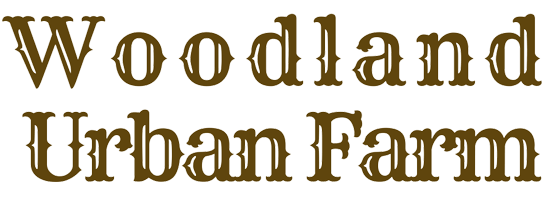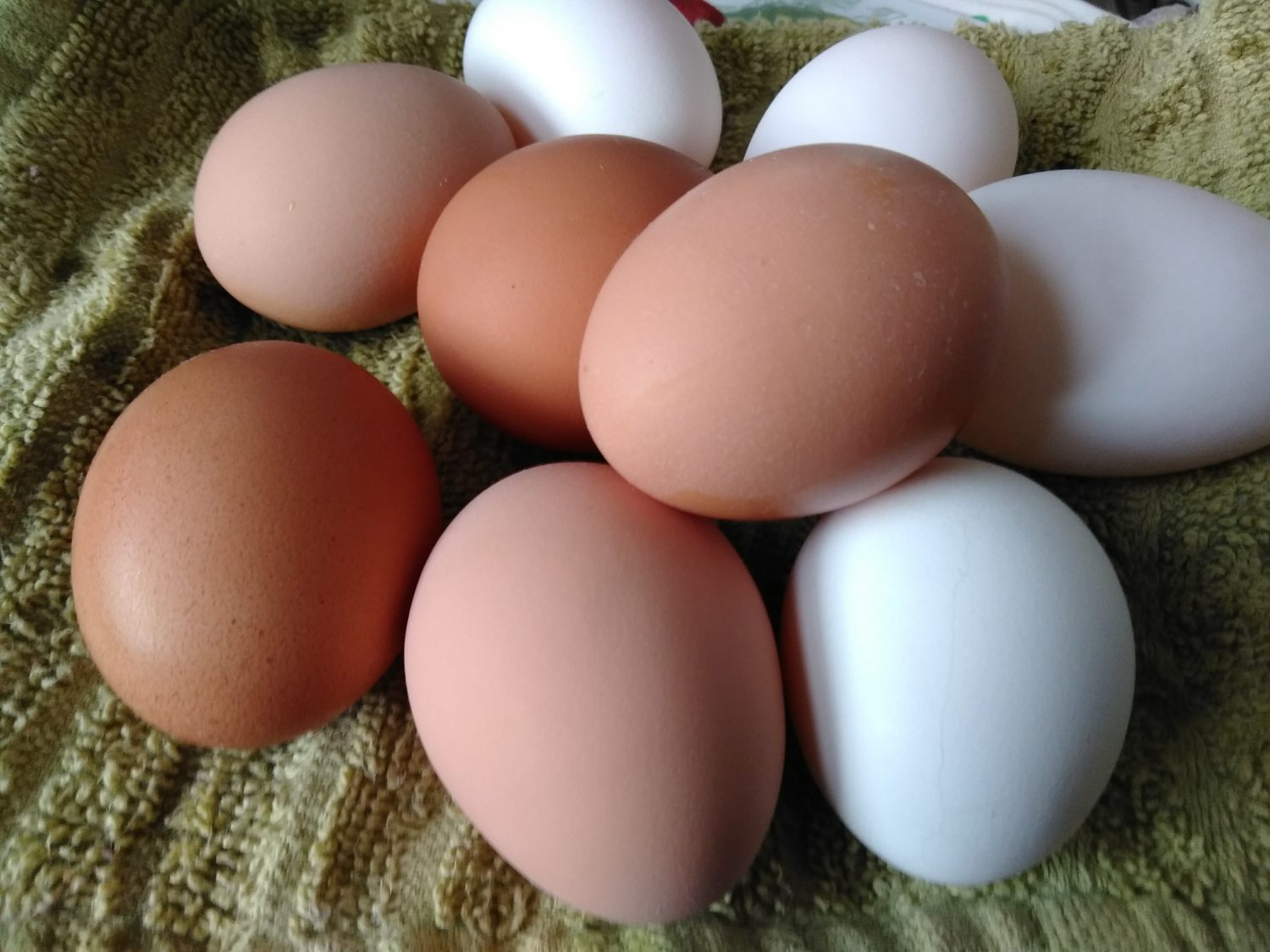On one of the Facebook pages I follow, people talked about a clearance sale on vegetable seeds at Dollar General. People were getting packs of seeds for as little as two cents each. I checked around, found that the Dollar General in Gahanna still had seeds, and sure enough, everything was marked 90% off. I pretty well cleared out their seeds for edibles. I figure I have most of my seeds for the next three years now. 655 packets of seeds and a bottle of Mt. Dew came to a total of $29.51. I figure I’ll grow a lot of starts to sell next year and maybe set up an aquaponic system for growing lettuce.
Anyway, because I have all these new seeds, I figured it was time to go through my old ones and throw away a bunch of stuff. The oldest was a pack of cucumber seeds from 1995! I came across something that sent me doing some research, though. I have a pack of Bloody Butcher corn from Seed Savers Exchange that I never opened. It’s packed for 2012, so it might still be viable. I wasn’t too impressed at first glance because I thought it was just an ornamental corn, and as ornamental varieties go, my Glass Gem beats the pants off an all-red variety. But I looked closer and thought, “Hey, that looks like a dent corn, not a flint.”

I’ve been thinking I should get away from growing flint corn unless I’m growing a proven variety of popcorn. Last year I grew Glass Gem to sell as seed, and I had a lot left over. This year, I decided to try crossing it with a couple varieties of popcorn I like, and as soon as I had planted it I regretted it. Developing new breeds takes years, and I don’t feel like I have the space to devote to that kind of experimentation. My goal was to develop a colorful popcorn. Glass Gem has beautiful colors but doesn’t pop well. I realized (after I planted) that I could have achieved the same thing without years of selective breeding just by growing some proven varieties of colored popcorn (I’ve seen reds and blues), shelling them, and mixing them together before bagging. Flint corn is very hardy as far as surviving the cold, but you don’t grow corn in the winter anyway, so it’s not really much of an advantage unless you live in a really cold place or get hit with a little ice age. (Flint corn was one of the few crops to survive the “Year Without A Summer” in 1816.)
Flint corn isn’t anywhere near as productive as dent corn, though, which is why dent corn is what’s grown for everything from corn chips to biodegradable plastics. Flint corn is also especially prone to “lodging” (falling over for no apparent reason). Sweet corn is marketable, but only for a short time. I like the idea of growing something that has a shelf life of more than a few days, especially a staple crop. Also, most of the tasty sweet corn varieties I’m familiar with are hybrids, and I like to save my own seeds. It looks like dent corn might be the way to go.
If I get chickens again, I’d like to grow at least some of their feed. I’m thinking that growing a dent corn, pole beans, and pumpkins together would be the best bet for feeding chickens. Since most of what’s grown in this country is corn, and since most of that corn is GMO, I see the value in preserving at least one heirloom breed of dent corn, especially on this farm, since our location in town and surrounded by woods pretty well protects us from cross-pollination from the big, rural, commodity farms.
Since I’ve been kicking around the idea of growing an heirloom dent corn anyway, I was pretty excited to see that I had what appeared to be a pack of heirloom dent seeds. I went online to look up the variety and see what I could learn about it. I’m impressed. This article in Western North Carolina Magazine says Bloody Butcher is a highly sought-after variety, and a favorite for moonshine. It gets 12′ tall and the ears are about 8″-12″, with two ears per plant. In looking up Bloody Butcher, though, I came across some other heirloom varieties of dent corn, and now I’m feeling indecisive.
A site called southernexposure.com has Daymon Morgan’s Kentucky Butcher, with the following description:
“(rainbow) 110 days. [Late 1800s Appalachian family heirloom] Beautiful, multicolored, huge ears (up to 14 in. long!) on sturdy 12-18 ft. stalks, 1-2 ears per stalk, 10-14 rows per ear. Grown by generations of Daymon Morgan’s family in Leslie Co., eastern KY; selected since 2001 by Susana Lein of Salamander Springs Farm in Berea, KY. Some all-red and all-blue ears along with an array of purple, white, and painted orange kernels. Bloody Butcher parentage crossed over the decades to produce an immensely productive, drought tolerant, hardy dent corn good for sweet roasting ears and gorgeous, delicious cornmeal.”
Eighteen-foot stalks! That’s like bamboo! I have trees smaller than that! And while it’s no Glass Gem, it’s very colorful.

And it’s silly, but since I already own a pack of Bloody Butcher, and because I visited a former housemate of mine while she was going to college in Berea, I kind of feel like I already have a personal connection to this Monster Rainbow Flour corn. But then, what’s this?
Ohio Blue Clarage
“(blue) 100 days. [Developed west of the Appalachians in the Ohio and W. Virginia area ~1830- ’50.] A highly uniform, semi-dent corn. Solid blue, medium-sized ears on 7 ft. stalks, 1 ear/stalk. Originally developed as a meal and feed corn, it has a higher sugar content than most dent corns, and may be used as a table corn when harvested in the milk stage. When used for cornmeal it has a sweet flavor. It mills easily and makes speckled blue and white flour, but if the bran is sifted out, a white flour is obtained. Older farmers who use this corn to feed chickens claim that the chickens will eat more, lay more eggs, and put on more meat. Resists lodging, and tolerates crowding and smut better than many other open pollinated corns.”
Holy moly! An heirloom variety originating from SE Ohio 185 years ago that makes sweet, pretty flour and big, happy chickens…that sounds just about perfect. It’s not a true dent, being halfway between a dent and a flint, but it says it’s actually sweeter than full-fledged dents. And with 7′ stalks instead of 18′ stalks, it probably won’t be as heavy a feeder.
I thought this one looked pretty, even if it’s better suited to farms further south.
Hickory Cane Dent
 “(white) 85/110 days. [pre- 1875] Heirloom dent corn originally selected by Native Americans in N. Florida and S. Georgia. It came to be prized across the mountain South for roasting ears, creamed corn, grits, and hominy, and particularly for white cornmeal, as well as fodder for animals. Plants up to 15 ft. tall. Tight ears keep out ear worms. Large ears stay in the green milk “roasting ear” stage longer than most heirlooms.”
“(white) 85/110 days. [pre- 1875] Heirloom dent corn originally selected by Native Americans in N. Florida and S. Georgia. It came to be prized across the mountain South for roasting ears, creamed corn, grits, and hominy, and particularly for white cornmeal, as well as fodder for animals. Plants up to 15 ft. tall. Tight ears keep out ear worms. Large ears stay in the green milk “roasting ear” stage longer than most heirlooms.”
This one sounds like a real performer:
Reid’s Yellow Dent
“(yellow) 85/110 days. [1840s. Robert Reid had a poor stand of the light red, late-maturing ‘Gordon Hopkins’ one year and replanted the missing hills with the early yellow flint corn. He then grew accidental hybrid until it stabilized. A prize winner at the 1893 World’s Fair and progenitor of a number of yellow dent lines.] One of the most productive, hardy corns ever developed. This old-timer is well known in the Mid-Atlantic region, where it is revered for its adaptability and dependability in Southern heat and soils. 7 ft. stalks with 9 in. double ears well-filled with 16 rows of deep, close-set, moderately flat seed.”
Here’s another native of southern Ohio:
Leaming’s Yellow
(yellow) 95 days. [1850s, bred by Jacob Leaming of Clinton County, Ohio. Rare now, this famous variety won a prize at the World’s Fair in Paris, and has been used in breeding much of the U.S.’s corn.] 8½-10 in. ears with deep yellow kernels, 14-22 rows/ear, red cobs. 7-8 ft. stalks. Widely adapted, though not recommended for Deep South.
Possibly a challenger to the Ohio Blue Clarage:
McCormack’s Blue Giant
(blue) 85/100 days. [Introduced 1994 by SESE. Bred by Dr. Jeff McCormack from a cross between Hickory King and an unnamed heirloom blue dent.] The large, wide, smoky blue kernels can be ground into a light blue flour, suited for blue tortillas and blue corn chips. Also good as a roasting ear corn (old fashioned corn on the cob). Especially suited to the eastern U.S., clay soils, and drought-prone areas. The tall 10-12 ft. stalks are not recommended for loose soils or high wind areas. One or two 7-8½ in. ears per stalk. Good tolerance to leaf blights.
The Hickory King they mentioned is a favored variety for hominy and grits in Virginia.
Here’s another giant descendant of Bloody Butcher:
Pungo Creek Butcher
“(rainbow) [Eastern Shore heirloom from Bill Savage, grown for 165 years by Pungo Creek, VA farmers. Genetic analysis shows it to be descended from Bloody Butcher.] A tall, hardy corn with sturdy stalks up to 11 ft. Ears are a mixed rainbow of red, brown, yellow, and sometimes purple. 9-12 in. ears in tightly wrapped husks. Rough milled this is a nutritious feed for your flock, or the corn can be ground into a meal with rich flavor and unusual color. Pretty enough to grow just for looks, this corn is delicious baked into muffins or cornbread.”
Actually, to be honest, I’m not sure I’m going to be growing any of this next year unless I get my second field cleared. I have a bunch of sweet corn seed I need to use up. I’d love to grow so many of these varieties, though…and wheat, and millet, and amaranth, and rice, and…
I’m gonna need a bigger farm.








